Introduction
- India’s space sector has made remarkable advancements, highlighted by the success of Chandrayaan-3, showcasing the country’s growing technological capabilities.
- As the Government of India sets ambitious goals for the next two decades, the development of reusable rockets, such as ISRO’s upcoming Next Generation Launch Vehicle (NGLV), will be critical to achieving self-reliance and global competitiveness in space exploration.
New Space Launches
Aditya-L1 Mission:
- Launched aboard the Polar Satellite Launch Vehicle (PSLV), Aditya-L1 aims to study solar radiation from the Earth-Sun Lagrange point (L1). It reached its orbit around L1 by January 6, 2024, and completed its first orbit on July 2, 2024. The mission’s significant achievement includes tracking a solar storm in May 2024, in collaboration with ground observatories and lunar spacecraft.
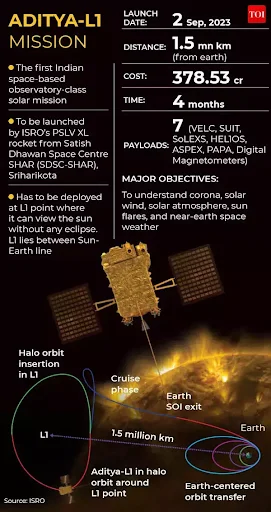
Gaganyaan TV-D1 Test Flight:
- A critical part of ISRO’s human spaceflight program, the Gaganyaan TV-D1 test flight successfully separated the crew module from the Test Vehicle (TV). This marked a crucial step in ensuring the safety of the crew module for future crewed space missions. The test vehicle was successfully recovered by the Indian Navy vessel INS Shakti.
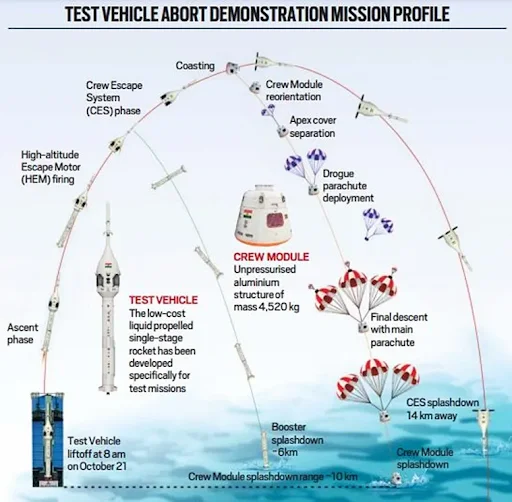
XPoSat Launch:
- The XPoSat mission, designed to study the polarization of radiation from celestial objects, is an important addition to India’s space exploration efforts. This mission aligns with NASA’s IPEX mission and aims to enhance global space research.
Read also: UPSC Essentials: Tobacco Board, Space Tech & Ketamine
RLV-TD Tests:
- ISRO’s Reusable Launch Vehicle (RLV), Pushpak, underwent successful tests, including landing experiments simulating conditions from space. These tests have provided essential data for the upcoming Orbital Return Flight Experiment, paving the way for India’s future in reusable rocket technology.
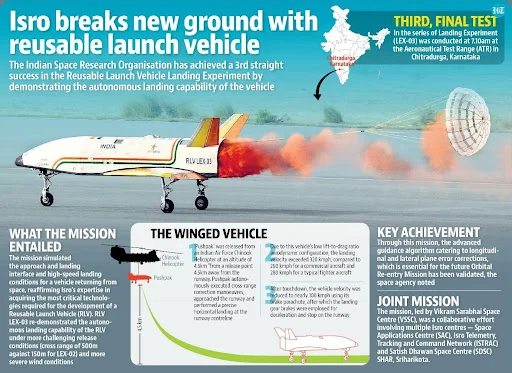
SSLV Development:
- The final test flight of the Small Satellite Launch Vehicle (SSLV) was completed successfully, confirming its readiness for commercial use. The payloads included earth observation tools and an ultraviolet dosimeter for the Gaganyaan mission, demonstrating SSLV’s versatility in space missions.
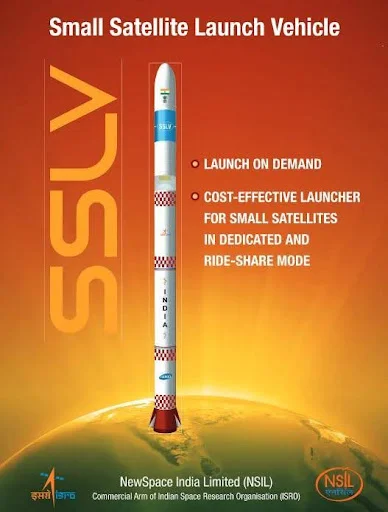
Regulatory and Institutional Developments:
- Private Sector Contributions: Private space companies in India are progressing with key missions. Agnikul Cosmos launched its SoRTeD-01 vehicle, while Skyroot Aerospace is developing the Vikram 1 rocket. Dhruva Space and Bellatrix Aerospace also contributed to the PSLV-C58 mission, further positioning India as a space-tech hub.
- NewSpace India Ltd. (NSIL): NSIL has been tasked with managing the commercialization of space technologies like satellite data and launch services. In May 2024, NSIL signed a deal with SpaceX for the GSAT-20/GSAT-N2 satellite and has sought qualifications for LVM-3 production.
- Regulatory Reforms: IN-SPACe, India’s space regulator, has updated its policies and issued new licenses, including the first satellite broadband license to Eutelsat OneWeb and the first ground station license to Dhruva Space. The government has also amended the foreign direct investment (FDI) policy, now allowing 100% FDI in most space sectors, with some exceptions for satellite manufacturing and launch infrastructure.
Importance of India’s Space Sector
- Cost-Effective Missions: India has gained international recognition for its ability to conduct space missions at a fraction of the cost of Western countries. For example, the Mars Orbiter Mission (Mangalyaan) was 10 times cheaper than similar missions undertaken by NASA and other space agencies, making India an attractive destination for cost-effective space research.
- Boost to ‘Space Industrialization’: India currently accounts for only 2% of the global space economy, valued at around $7 billion. However, the sector’s growth has the potential to significantly boost India’s space-tech ecosystem, with projections indicating that India’s space economy could reach $100 billion by 2040.
- Expansion of Cooperation in Outer Space: While geopolitical rivalries exist, India’s space sector provides an opportunity to reduce competition and expand international cooperation. The sector also enables India to gain a strategic advantage in space over geopolitical rivals, bolstering its military and technological standing.
- India has signed several key agreements with countries such as Russia, France, and the United States, focusing on space research, satellite launches, and space exploration.
- In a recent collaboration, India and Russia signed a deal to enhance India’s Indian Regional Navigation Satellite System (IRNSS) by incorporating data from Russia’s GLONASS satellite constellation to improve navigation accuracy.
- France’s CNES signed an agreement with ISRO for facilitating the launch of French and European satellites through the PSLV and GSLV rockets, further strengthening the India-France space collaboration.
- The Chandrayaan-1 mission, which discovered water on the Moon, was a joint effort with NASA’s Moon Mineralogy Mapper (M3), highlighting India’s collaboration with international space agencies.
- Private Sector Growth: India ranks fifth globally with 368 private space companies, surpassing countries like China (288), France (269), and Spain (206), according to a 2021 report by SpaceTech Analytics. Companies such as Agnikul Cosmos, Skyroot Aerospace, and Bellatrix Aerospace are making significant strides in developing cost-effective and innovative space technologies
- Enhancement of India’s Role in the Artemis Accords: India’s membership in the Artemis Accords, a set of principles for space exploration cooperation, places it alongside leading space nations like the United States, Canada, Japan, and Australia. The Artemis Accords focus on the peaceful exploration of the Moon, Mars, and beyond, and India’s participation in this international initiative enhances its role in the global space exploration community.
Challenges in Space Infrastructure in India
- Budgetary Constraints: India’s space sector is grappling with budgetary limitations. In 2023-2024, there was an 8% decline in budget allocations to ISRO compared to the previous year.
- For example, ISRO’s 2023-2024 budget was ₹13,479 crores (around $1.6 billion), which is significantly lower compared to NASA’s budget of $25 billion in the same year, and China’s space budget, which stands at about $11 billion annually.
- Manpower Shortages: The space sector faces challenges related to brain drain and a lack of skilled professionals. Despite its achievements, ISRO struggles to find qualified personnel in key areas, with fewer students pursuing advanced space studies.
- A key issue is the limited number of students pursuing advanced space studies in India. For instance, only 20,000 students annually enroll in space-related programs in India, compared to 50,000 students in countries like the U.S. and Russia, leading to a shortage of skilled professionals to meet the growing demands of India’s space ambitions.
- Absence of a Clear Legislative Framework: The Space Activities Bill, introduced in 2017, has yet to be passed, leaving a regulatory void that hinders further growth. The lack of clear laws impacts private sector investments and overall sector development.
- Lack of Robust Dispute Settlement Mechanism: The absence of a reliable dispute resolution mechanism in India’s space sector has deterred private investment. One of the most high-profile cases was the Antrix-Devas satellite deal, where the government canceled the contract, resulting in a $1.2 billion loss due to an International Chamber of Commerce (ICC) tribunal ruling in favor of Devas Multimedia.
- Technological Challenges: . For example, Chandrayaan-3, although a success, took approximately 6 weeks to reach the Moon, compared to the Russian mission Luna-25, which reached the Moon in just one week. ISRO’s current GSLV and LVM3 rockets are capable of launching payloads up to 4 tons into Geosynchronous Transfer Orbit (GTO), but they still fall short of the more powerful rockets from countries like the U.S. and China.
- India also has to rely on foreign rockets like SpaceX’s Falcon 9 for heavier payloads
- ISRO’s current technology needs upgrading, such as the development of the Next-Generation Launch Vehicle (NGLV), which is intended to triple the payload capacity of existing systems, but achieving this will require substantial investment in R&D.
- Government Funding-Driven Sector: Critics argue that the heavy reliance on government funding for the space sector in India restricts the country’s ability to prioritize other critical national needs, such as poverty alleviation, healthcare, and education.
Steps Taken by the Government to Address These Challenges
- Indian Space Policy, 2023: The new policy aims to streamline the development of India’s space sector, encouraging private sector participation and expanding the commercialization of space technologies.
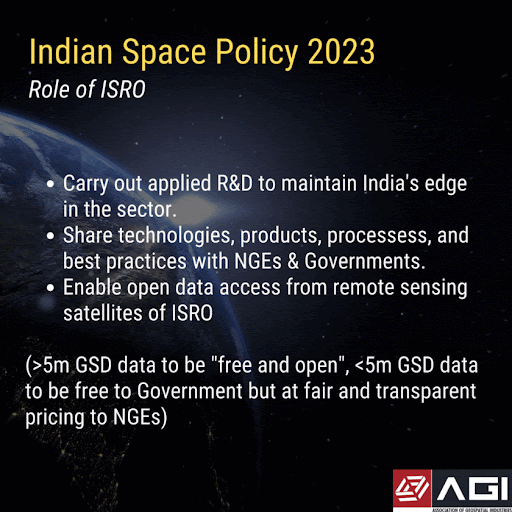
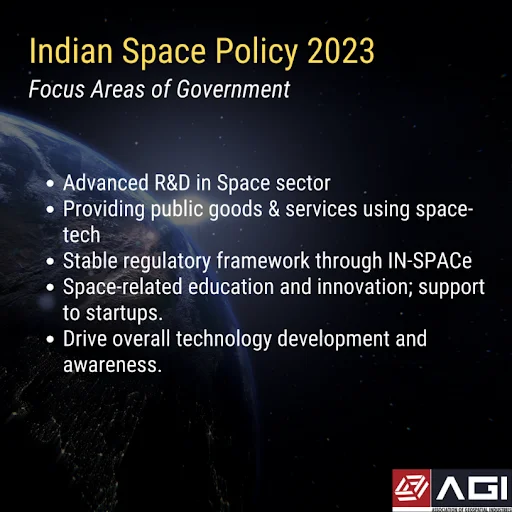
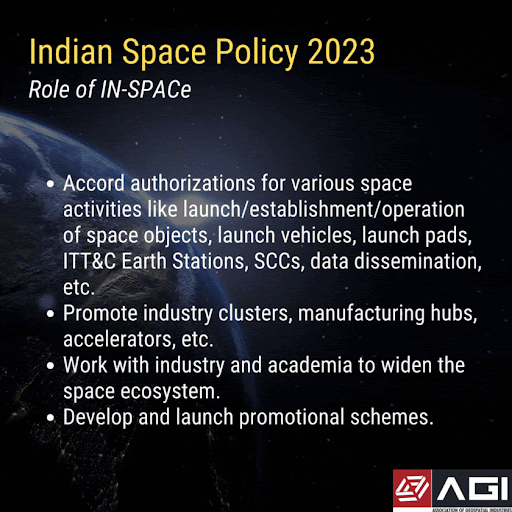
- IN-SPACe: IN-SPACe acts as a facilitator for private companies, providing them with access to India’s space infrastructure and simplifying the regulatory process. This initiative reduces bureaucratic delays and enhances private sector involvement.
- FDI Policy Reforms: The government’s amendment to the FDI policy now allows 100% foreign direct investment in most space sectors, with specific exceptions for satellite manufacturing and launch infrastructure. This move aims to attract international investments and accelerate sector growth.
- NewSpace India Ltd. (NSIL): Established in 2019, NSIL aims to commercialize India’s space technologies. It has been instrumental in scaling up India’s manufacturing base and helping private companies secure contracts for satellite launches and related services.
See more: UPSC Exam Eligibility 2025 – Number of Attempts, Age Limit, Qualification
Way Forward
- Push for Greater Privatization: India should develop policies that promote private sector investment and facilitate the commercial growth of space technologies. Awarding contracts to private firms for the development of reusable, heavy-lift rockets can reduce costs and ensure long-term sustainability.
- Passage of the Space Activities Bill: The government should prioritize the passage of the Space Activities Bill to offer private players legal clarity and protection. This will help build confidence among investors and accelerate sector growth.
- Setting Up a Space Dispute Tribunal: To address disputes more efficiently and protect private sector interests, the government should set up an independent tribunal for space-related conflicts.
- Enhanced International Collaboration: India should deepen its research and collaboration with global space pioneers such as the U.S. and Russia. These partnerships can help India overcome technological limitations and boost its space capabilities.

